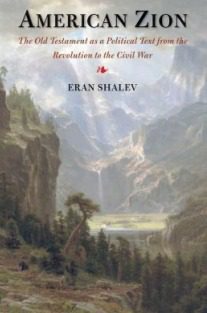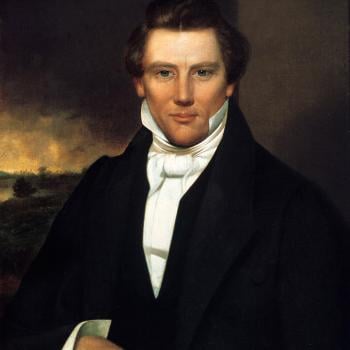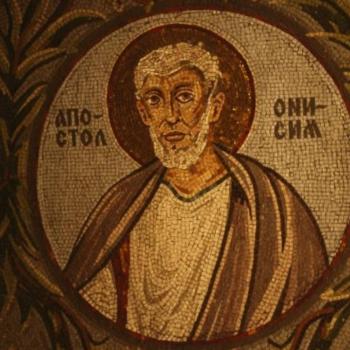Americans during the Revolutionary era and the Early Republic lived in a world suffused with the Hebrew scriptures. That reality, already charted by many historians (including Mark Noll, who once termed the Old Testament (“the common coinage of the realm”), is only the backdrop to Eran Shalev’s remarkable American Zion: The Old Testament as a Political Text from the Revolution to the Civil War.
Most expansively and simply, Shalev argues that “political Hebraism” led Americans — both those more and less religious) to identify their new nation as a second Israel, a nation chosen by the Almighty for special purposes should it remain true to its founding principles. In his conclusion, Shalev observes that because “the United States was created in the shadow of the biblical Israelite nation … [it] should not surprise us that so many of its citizens still ardently believe that God regards their nation with special favor.” During the revolutionary years, Americans read the Old Testament through the filter of Whig republicanism (and vice versa). For instance, Gideon became a noble, republican military leader who refused offers of kingship (a la Cincinnatus and George Washington). Americans saw their own polity (or desired polity) reflected in pro-monarchical Israel, their desired leaders in the judges chosen by the people for their virtue.
Despite the subtitle, Shalev actually delves into more than just “political Hebraism.” Rather, he shows how deeply the Old Testament pervaded American culture in many different and unexpected ways. For example, he offers a concise summary of theories about Indian Israelitism (especially the Indian’s possible descent from the lost ten tribes of Israel). Along the way, he also offers a sharp (and to my eyes, original) analysis of both the possible production and the reception of the Book of Mormon.
It turns out that the Book of Mormon was one of many “pseudobibles” that Americans encountered in the eighteenth and nineteenth centuries. Many of the earlier entries were political satires, such as the 1773 Chronicle of the Kings of England and 1774-1775’s The First Book of the American Chronicles of the Times. The latter, for instance, featured “Mordecai the Benjaminite (for Benjamin Franklin) and Thomas the Gageite (Thomas Gage, the military commander of Boston).” Such texts were composed in the idiom of the King James Bible, repeating ad nauseam “And it came to pass…” Richard Snowden’s enormously popular The American Revolution; Written in the Style of Ancient History (1793) concluded chapters in keeping with the ancient chronicles of Israel: “And the rest of the acts of [Lord] Dunmore, and all that he did … are they not written in the book of Ramsay the scribe?” The latter reference is to David Ramsey, an early historian of the revolution. A number of pseudobiblical publications fashioned themselves as the translations of ancient records, mysteriously or miraculously preserved.
Now the Book of Mormon was quite different than these texts, as Shalev readily acknowledges. For starters, it was certainly not a political satire, regardless of the extent to which nineteenth-century concerns intruded into the text. Providence, not politics, was its central concern. Shalev also might have mentioned that the Book of Mormon sharply diverges from any sort of Hebraism through its relentless focus on the character of Jesus Christ (though that is in keeping with the shift toward “New Testamentism” present in the United States by 1830).
Nevertheless, Shalev suggests that “the unique combination of the biblical form and style that the Book of Mormon shares with the pseudobiblical texts, as well as their distinctly American content, provide a case for seeing Smith’s book as meaningfully affiliated to that American mode of writing.” It strikes many modern non-Mormon readers as bizarre that the Book of Mormon appropriates language from the King James Bible. It would have seemed less bizarre and even familiar to many Americans of the time.
Shalev points to evidence that the pseudobiblical texts were readily available in Joseph Smith’s Palmyra. Whether Smith translated an ancient record or otherwise produced the text, moreover, it is more comprehensible in light of Shalev’s language that he would employ the idiom of the King James Bible for what he brought forth. In other words, what Smith produced was unique, but not without relevant antecedents. Furthermore, given how strongly many Americans thought of themselves and their nation as a Second Israel, perhaps it was not so far-fetched that the cradle of what might become a New Jerusalem should also have a more ancient sacred history.












